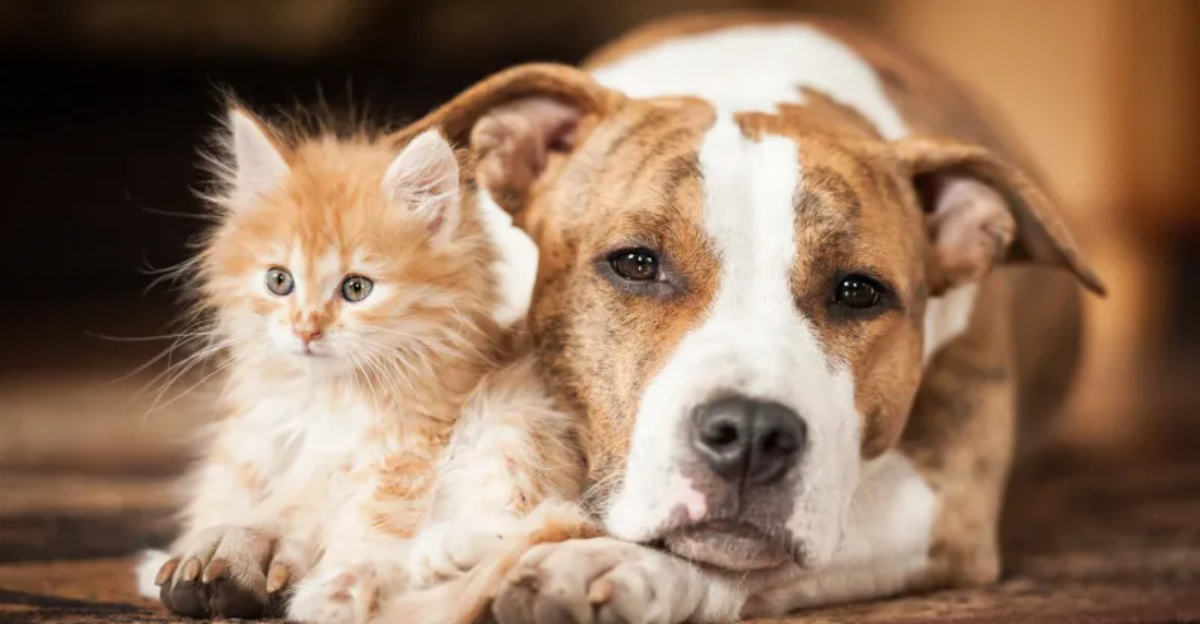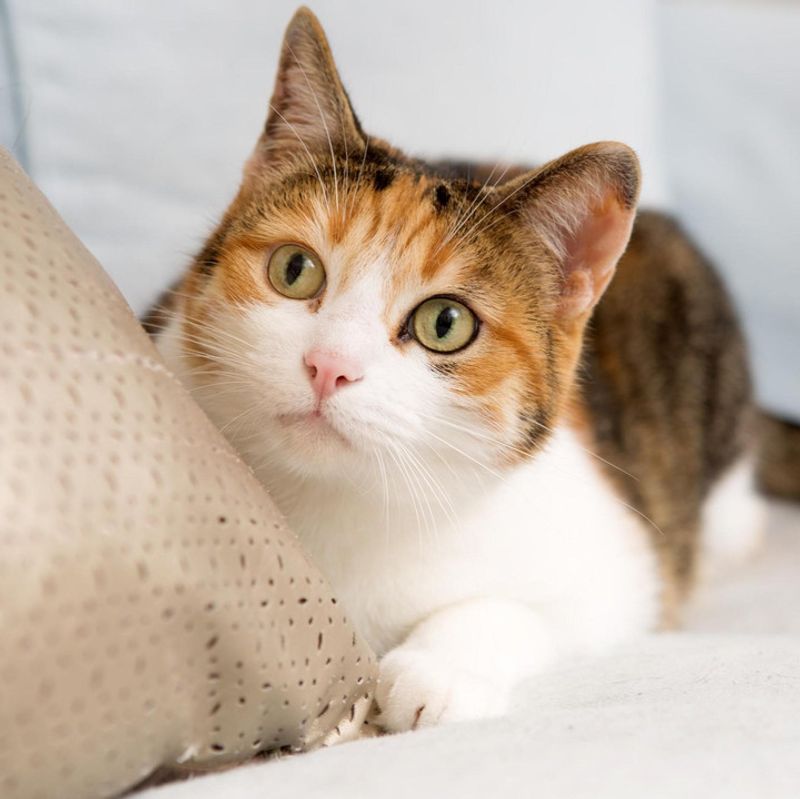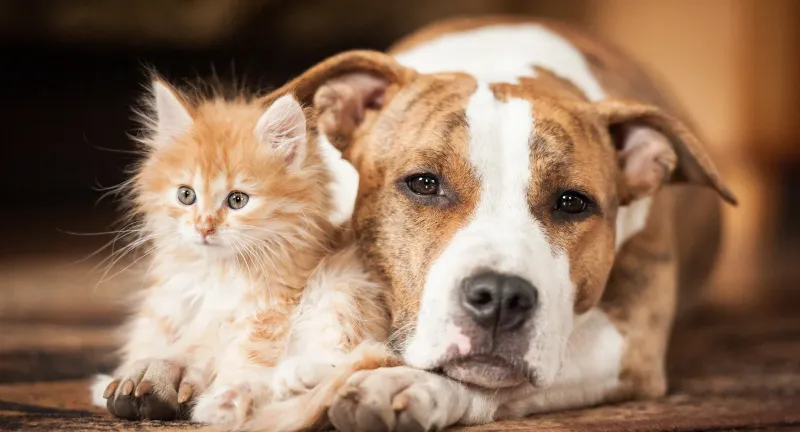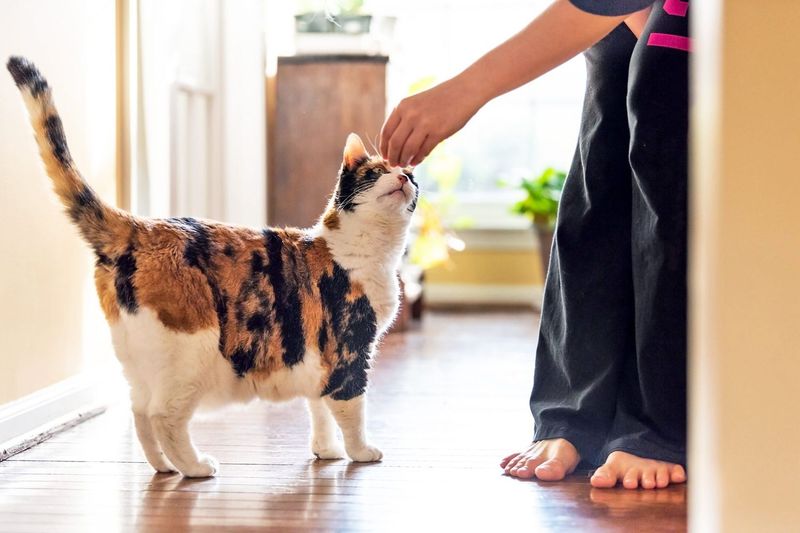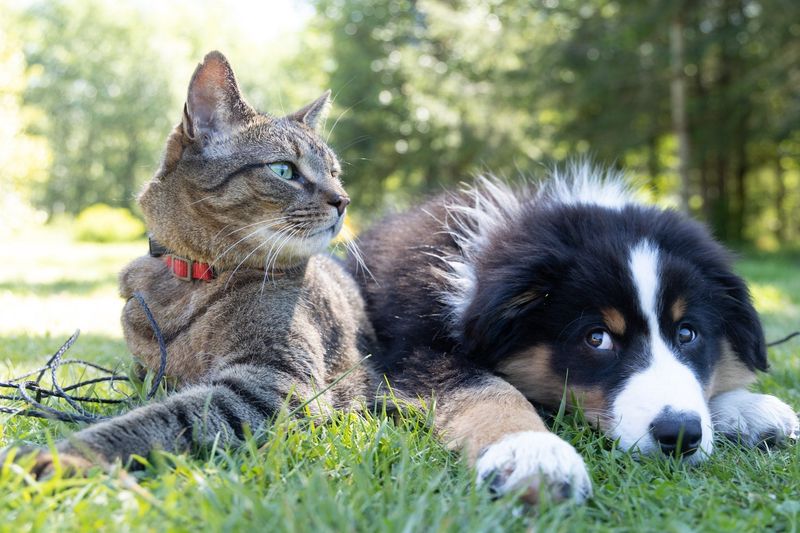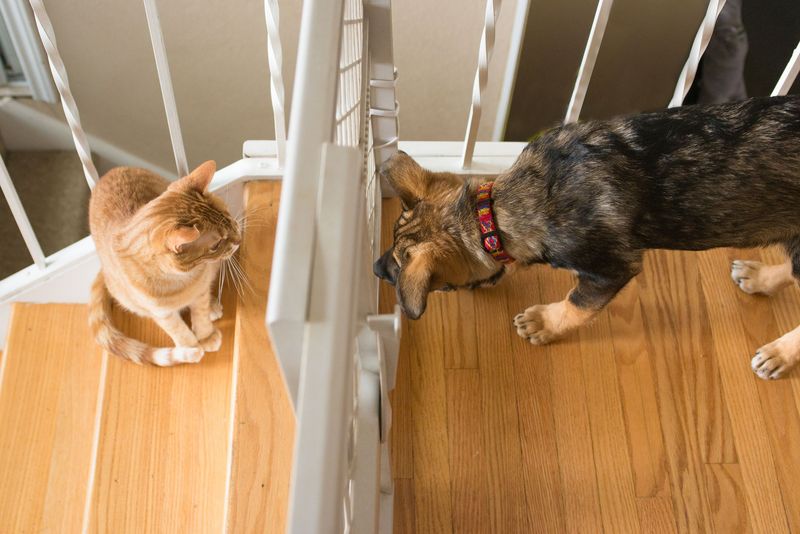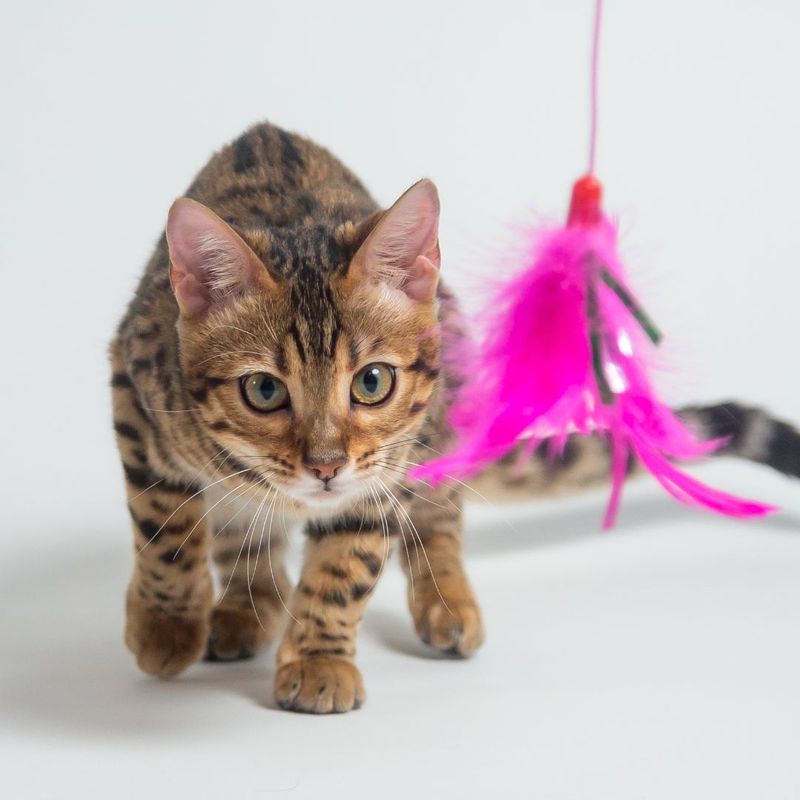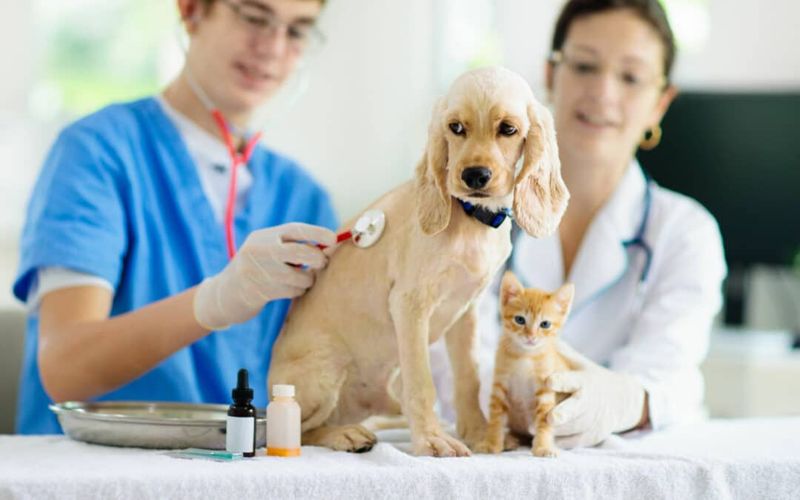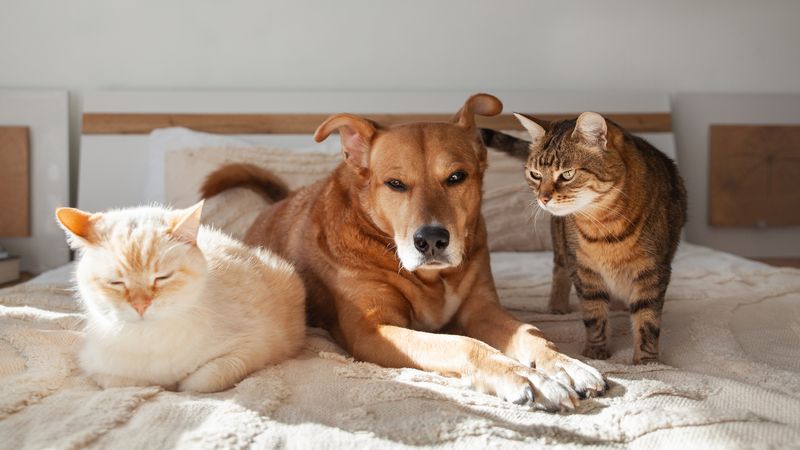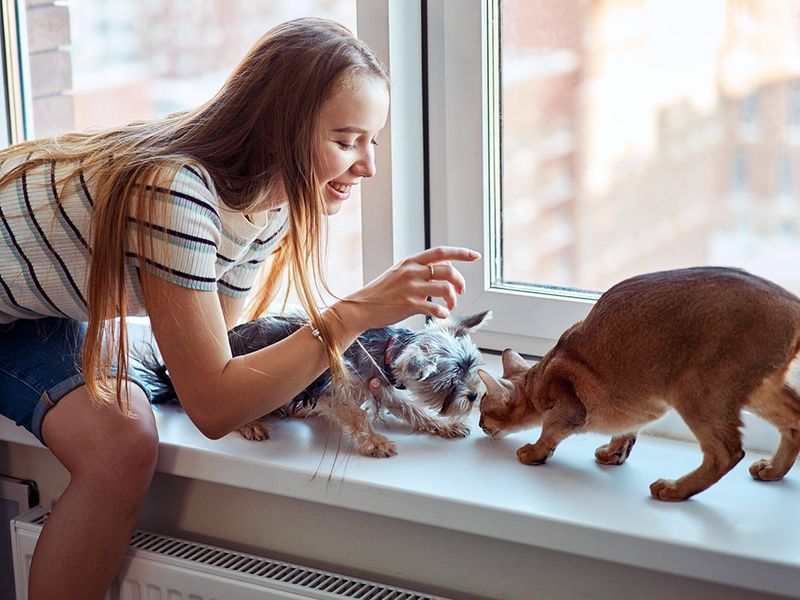📖 Table of Content:
Thinking of adding another pet to your household—or struggling to keep the peace between your current furry companions? Cats are territorial by nature and can be slow to accept new animals in their space, whether it’s another cat, a dog, or even a small pet like a rabbit or bird. But with patience, planning, and the right approach, peaceful coexistence is possible.
In this comprehensive guide, we break down 9 must-do steps that can make all the difference in helping your cat adjust to other animals. You’ll learn how to prepare your home, recognize subtle signs of stress or aggression, and implement techniques that foster trust and reduce territorial conflict. We’ll also explore common mistakes to avoid during introductions, how to set realistic expectations, and what to do if your pets still aren’t getting along.
Whether you’re merging multi-pet households, bringing home a new kitten or puppy, or helping an anxious cat learn to share its space, these expert-backed strategies will help you create a calmer, happier home—for everyone involved.
1. Understand Your Cat’s Personality
Each cat has a unique personality. By understanding its quirks and traits, you can better facilitate introductions to other animals. Observe how your cat reacts to new environments and stimuli, and take note of any specific behaviors. This insight will help in arranging smoother interactions.
Consider whether your cat is more introverted or social. A social cat might be more open to new friends, while an introverted one might need extra time and patience.
With this understanding, you can tailor introductions to suit your cat’s comfort level, ensuring a more positive experience for everyone involved.
2. Gradual Introductions
Introducing your cat to other animals should be a gradual process. Allowing time for both animals to acclimate to each other’s scent can reduce anxiety. Begin with a closed-door meeting, letting them sniff each other under the door.
Next, allow visual contact through a barrier, such as a glass door or a baby gate. This step-by-step exposure will help both animals adjust without feeling threatened.
Patience is key during this process. Rushing can lead to unnecessary stress for both your cat and the new animal, potentially hindering future interactions.
3. Use Positive Reinforcement
Positive reinforcement can significantly aid in fostering harmonious relationships between your cat and other animals. Reward your cat with treats, affection, or play whenever it displays calm or friendly behavior towards the newcomer.
This association of positive experiences with the presence of other animals encourages acceptance. Remember to be consistent with rewards to reinforce the desired behavior.
Over time, your cat will begin to associate the presence of other animals with positive outcomes, reducing resistance and enhancing the chance of a lasting friendship.
4. Maintain Separate Territories
Cats are territorial creatures. Ensuring your cat has its own space can prevent territorial disputes when introducing another animal. Provide distinct sleeping, eating, and litter areas for your cat.
This separation not only gives your cat a sense of security but also minimizes stress during the introduction period. The new animal should also have its own designated area to prevent conflicts.
By respecting each pet’s need for personal space, you create an environment where both can coexist peacefully, reducing the potential for tension and aggression.
5. Monitor Initial Interactions Closely
Supervision is essential during the initial interactions between your cat and other animals. Keeping a watchful eye can prevent misunderstandings and potential conflicts.
Use these initial meetings to gauge their interactions, intervening if necessary to prevent any negative behavior.
As the animals become more accustomed to each other’s presence, you can gradually increase the duration and frequency of their interactions. Ensuring these first meetings are positive is crucial for future harmony.
6. Provide Plenty of Playtime
Engaging your cat in playtime can alleviate stress and provide an outlet for energy, reducing potential conflicts with other animals. Use toys and activities to distract and entertain both your cat and the new pet.
Playtime can also serve as a bonding opportunity. Joint play sessions, where both animals can participate, help build positive associations.
Ensure that each pet has access to toys they enjoy, fostering a sense of companionship rather than competition. Play is not just fun; it’s essential for creating a peaceful cohabitation.
7. Ensure Health and Well-Being
Health checks are vital before introducing your cat to other animals. Ensure both pets are vaccinated and free from parasites to prevent health issues. A healthy environment reduces stress and results in smoother introductions.
Regular veterinary visits not only ensure physical well-being but also provide an opportunity to discuss behavioral concerns with a professional.
By maintaining their health, you lay a solid foundation for a successful relationship between your cat and the new animal, minimizing stress and enhancing overall interactions.
8. Respect Each Animal’s Boundaries
Understanding and respecting boundaries is crucial when helping your cat get along with other animals. Each animal has its own comfort zone, and acknowledging this can prevent conflicts.
Look for signs that your cat or the new animal is uncomfortable, and provide space if needed. This respect fosters trust and eases the transition into cohabitation.
By honoring each pet’s personal space and boundaries, you create a more relaxed and accepting environment where both animals feel secure and valued.
9. Seek Professional Help if Needed
Sometimes, despite your best efforts, your cat may not acclimate to new animals. In such cases, consulting with a pet behaviorist can be invaluable.
These professionals offer tailored strategies to address specific behavioral issues, facilitating better integration.
Investing in expert advice can save time and stress, offering solutions previously unconsidered. Remember, seeking help is not a sign of failure but a proactive step towards achieving a harmonious home for all your pets.
